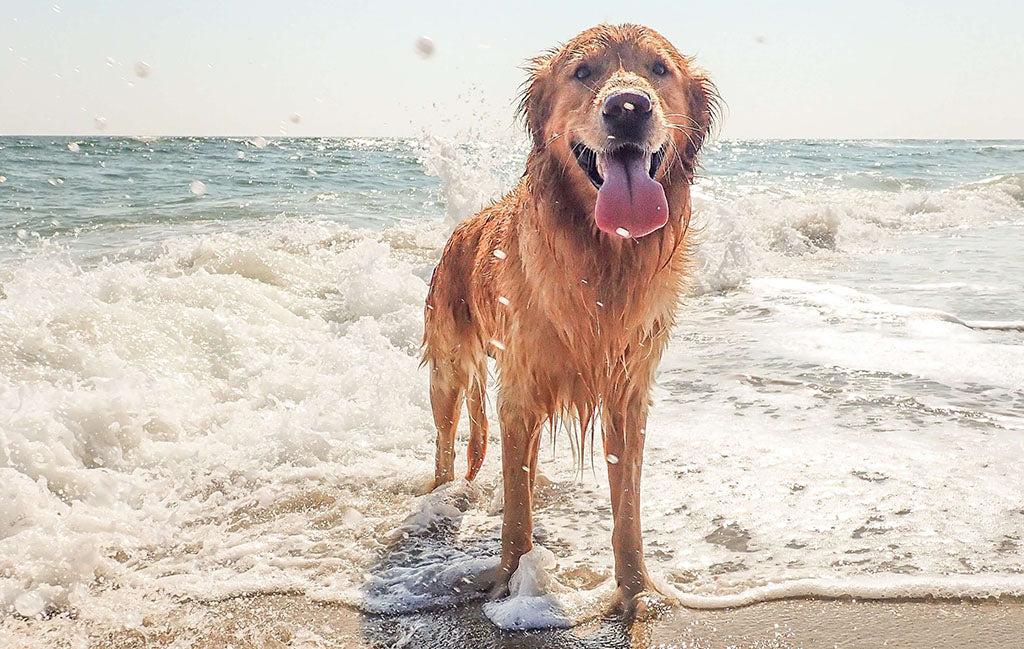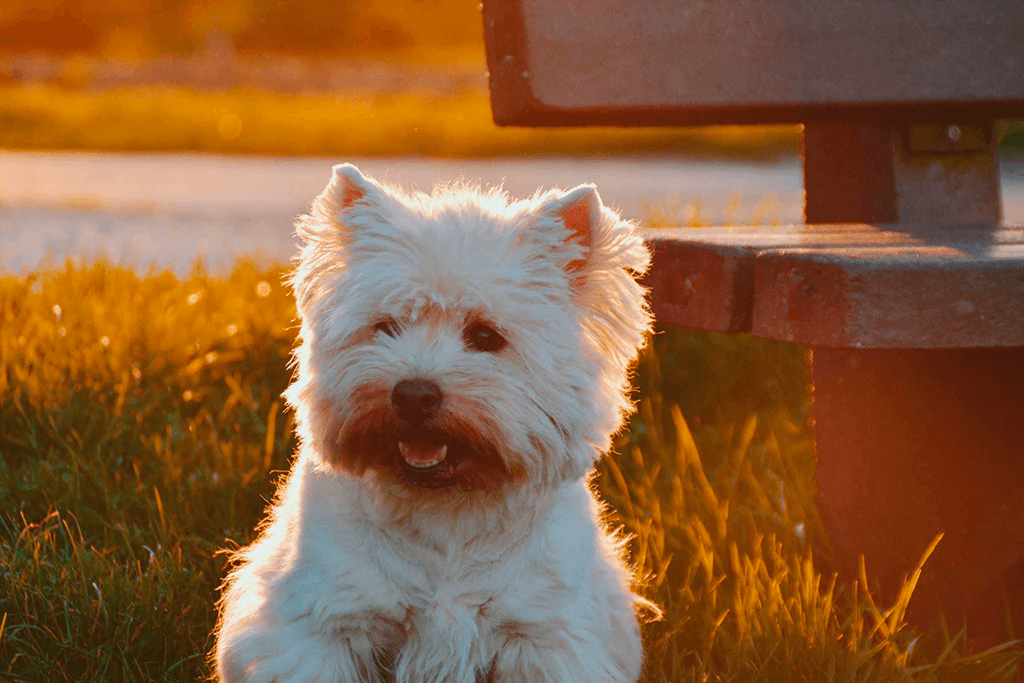Quick takeaway: Frequent walks are an essential part of a dog’s life. How often you should walk your dog depends on your pup’s breed and size, but even the smallest dog needs at least one 15-minute walk a day. You can find out what the recommended daily walking time is for your dog in our […]
- Home/
- Dog/
- Health & Wellness/
- How Often Should You Walk Your Dog, and How Long For? A Vet Explains
How Often Should You Walk Your Dog, and How Long For? A Vet Explains

Quick takeaway: Frequent walks are an essential part of a dog’s life. How often you should walk your dog depends on your pup’s breed and size, but even the smallest dog needs at least one 15-minute walk a day. You can find out what the recommended daily walking time is for your dog in our handy table below.
Walking Your Dog: What You Need To Know
Wanna go for a walk? Those five words will likely induce tail wags, barks of glee, and the tippy tap of toes bolting toward the door. Frequent walks are an essential part of a dog’s life, and studies prove that walking with your dog is good for you, too.
Interacting with your dog on a walk may lower your stress level, reduce blood pressure, and improve joint flexibility and muscle strength. As a bonus, the human-animal bond shared with your dog is further enhanced during walks.
However, there are things to remember before heading out on your next walk with your best pal by your side. Plus, the age-old question, “How often should you walk your dog?” doesn’t have a one-size-fits-all answer. In this article, we’ll break down the dos, don’ts, frequency, and tips for walking your dog. Happy trails start with well-prepared pet parents.
Why Walks Matter for Dogs
Walking strengthens a dog’s bond with its parents and serves many other purposes. The physical movement associated with walking helps with weight control, muscle tone, and joint health. Walking prevents obesity in people and pets, while the mental stimulation of sniffing and exploring satisfies a dog’s emotional well-being.
For some pet parents, it may be frustrating when a dog sniffs for an extended period on walks. However, stopping your dog or rushing them through a walk is detrimental. This innate behavior is a must on walks because dogs experience the world through their sense of smell. In the same way humans read the newspaper or a website, dogs sniff their environment to get the latest updates happening in their world.
Opting for walks in a park, a new neighborhood, or an area previously not visited is an easy and powerful way to enhance your pup’s overall quality of life. Allowing your dog to sniff, stretch, and explore enhances their well-being. However, all dogs should have leash manners and understand “leave it” or “drop it” (or a hand signal for deaf dogs).
Getting out of your house or apartment and into the outside world gives your dog a change of scenery. If your pooch is alone for several hours during the day, they want to leave the confines of four walls and experience life in real time outside. A bored or understimulated dog will likely become depressed or act out by barking or chewing things. If you get excited about a walk, your dog will feed off your emotions on the other end of the leash.
How Often Should You Walk Your Dog?
“I generally recommend at least one 20-minute walk per day if the dog isn’t getting out and about in other ways,” says professional dog trainer Robin Bennett, CPDT-KA. “And that’s a minimum; some dogs require more than that, and some less.”
Bennett says dogs need free time to interact with the world safely with you. The frequency, breed, age, and overall health status of your dog are all considerations when planning your walks. For example, a short-legged, older Basset Hound would have a different walking pattern than a 3-year-old active Border Collie.
The length and pace of your dog’s walk can be shortened or lengthened depending on their needs and the factors mentioned earlier. Paying attention to your dog’s cues and using advice from their veterinarian, you can adjust each walk to match their overall needs and energy level.
How Breed Affects Walk Frequency
One of the most surprising things Bennett encounters as a professional trainer is walking frequency when talking to her clients.
“I think most people think walks have to be very controlled,” Bennett admits. “ I like giving my dog freedom on walks. I use a long line if it’s safe to do so and let my dog roam around and explore the world. When I’m in a more crowded area, I keep my dog on a shorter leash but still let him stop, sniff, and explore the world.”
Active or mixed breeds have different walking requirements than lower-energy breeds. The American Kennel Club categorizes recognized breeds into seven primary groups: sporting, hound, working, terrier, toy, non-sporting, and herding. Each breed has its own needs, requirements, and walking preferences. What satisfies a Golden Retriever may be overwhelming for a Pomeranian.
Pro Tip: Working and sporting breeds typically need more or longer walks due to their origins. Sporting breeds like Cocker Spaniels and working breeds like a Doberman Pinscher prefer longer walks, hikes, and off-leash time. I can attest that Cocker Spaniels love their walks and fun indoor times, too.
Recommended walk length and frequency for the 15 most popular dog breeds, grouped by size:
| Size | Breed | Walk Length (per walk) | Walks per Day | Total Daily Exercise |
|---|---|---|---|---|
| Small | French Bulldog | 15–25 minutes | 1–2 | ~30 minutes |
| Dachshund | 20–30 minutes | 1–2 | ~30–60 minutes | |
| Cavalier King Charles Spaniel | 20–30 minutes | 1–2 | ~30–60 minutes | |
| Pomeranian | 15–20 minutes | 2 | ~30–40 minutes | |
| Yorkshire Terrier | 15–25 minutes | 2 | ~30–50 minutes | |
| Medium | Cocker Spaniel | 30–40 minutes | 2 | ~60–80 minutes |
| Border Collie | 45–60 minutes | 2 | ~90–120 minutes (high-energy) | |
| Labrador Retriever | 40–60 minutes | 2 | ~90 minutes | |
| English Springer Spaniel | 40–60 minutes | 2 | ~90 minutes | |
| Bulldog | 20–30 minutes | 1–2 | ~30–60 minutes (avoid overexertion) | |
| Large | Golden Retriever | 40–60 minutes | 2 | ~90 minutes |
| German Shepherd | 45–60 minutes | 2 | ~90–120 minutes (mental + physical) | |
| Boxer | 30–45 minutes | 2 | ~60–90 minutes | |
| Rottweiler | 30–45 minutes | 2 | ~60–90 minutes | |
| Doberman Pinscher | 45–60 minutes | 2 | ~90–120 minutes |
Age Matters: Puppies vs. Adult Dogs vs. Seniors
Puppies have a boatload of energy, but should not be taken on long walks (more about that shortly). Adult dogs generally thrive with 30 minutes to two hours of activity, including walks, daily. Senior dogs need to move, even if the walks are shorter or the activity is lighter.
Puppies are born with soft bones and joints. Rough play or extended periods of exercise can lead to deformities and limb issues. Bone fusion, or a dog’s growth plate closure, occurs at 12 months. However, larger and giant breeds don’t reach skeletal maturity until 18 to 24 months.
Puppies should always be taken outside for potty breaks and shorter walks when your veterinarian gives you the green light.
Adult dogs, which are generally between 1 and 7 years old, depending on the breed, enjoy longer walks or shorter, more frequent walks. As a lifelong dog mom, I couple walks with indoor play to keep my dog happy, healthy, and satisfied.
As you walk your senior dog, pay attention to signs of fatigue or pain, as these can impede your golden oldie’s ability to enjoy the experience. Aim for shorter walks without overexertion on softer surfaces when possible. Think grassy areas rather than city sidewalks.

Health & Medical Considerations
“If your dog has joint issues or medical conditions, indoor conditioning exercises can help,” Bennett says. “Shorter walks and walks on softer surfaces (dirt, sand, etc) will be easier on the joints.”
When asked how often should you walk a senior dog, Bennett says pet parents should discuss walks and physical activity with their veterinarian. Typically, just like with people, movement can be a friend to joints. Even with joint issues, you want to get the dog moving a little to keep the joints more mobile.
Warm-ups before walks are essential if your dog has mobility issues, a heart condition, or any sort of hindrance to movement. Start veterinarian-approved leash walks at a slow pace of 5 to 10 minutes before picking up the pace that your dog enjoys. Never force a dog to walk fast or keep up with your longer strides.
Weather, Environment, & Lifestyle Factors
Many dogs are disappointed when Mother Nature casts rain, snow, heat, hail, or other weather anomalies. Living in a hot climate means adjusting how and when you walk your dog. With age, breed, and medical issues in mind, you may need to forego a daily long walk with your dog. However, dogs should still be given ample time outside to potty and stretch their limbs. Raise a paw if you’ve held an umbrella over your dog during a rainstorm.
Our favorite inclement weather tips for dogs include:
- Avoid walking during peak heat times. Watch local forecasts for the best time to take your dog outside, usually early in the morning and after the sun sets.
- During cold weather periods, protect paws with booties or dog-friendly balm.
- Avoid hot sidewalks or those covered with rock salt and ice melt, as not all are pet-friendly.
- Play indoors with your dog if longer walks aren’t possible.
- Walk your dog in shady areas to avoid the sun’s direct rays.
- Check your dog’s paws after walks for cuts or things stuck to the paws or fur, and soothe them with paw balm. Rinsing paws after a walk keeps them in good shape.
- Ensure your dog’s nails are clipped. Overgrown nails feel like walking on high heels, so always have your vet or groomer keep nails a healthy length.
- Use weather-appropriate apparel for your dog. If you are cold in the winter or get wet in the summer, your dog also feels it.
- Never allow your dog to lick from puddles, lakes, or stagnant water when walking. It is unsafe, harbors bacteria, and you never know what may be lurking that cannot be seen.
- If a long walk is planned, take water and a bowl. Dogs need hydration the same way people do.
Signs Your Dog Needs More (or Fewer) Walks
Dogs who don’t get enough physical and mental stimulation will have behavioral issues, whether outwardly destroying things or retreating inward and becoming depressed.
I’m not sure behavioral issues will arise because of a lack of walking, but they can arise from a lack of exercise and mental stimulation,” Bennett agrees. “If you’re not walking with your dog, you’ll still want to make sure he/she is getting mental and physical exercise in other ways.”
She says that without enough exercise, dogs can become bored and find their outlet in ways humans generally dislike, such as digging in the yard, chewing things, or being too rambunctious in the house.
Conversely, dogs who get too many walks may show wear on their paws, lose too much weight, or show signs of disdain at walk time. Overexercising a dog may lead to fatigue and affect the bond you share. You never want your dog to associate exercise or time spent with you as negative.
Build a Consistent Walking Routine
Like all good things, consistency is key to making something work. Bennett says pet parents should take their time and enjoy the outdoor time with their dogs without rushing home.
Dogs thrive on routine, so the more established your routine, the better. However, don’t be too rigid with your route. Mix things up by walking in other areas than your local neighborhood. Just as people enjoy seeing new things, dogs love sniffing fresh places.
 C
C



